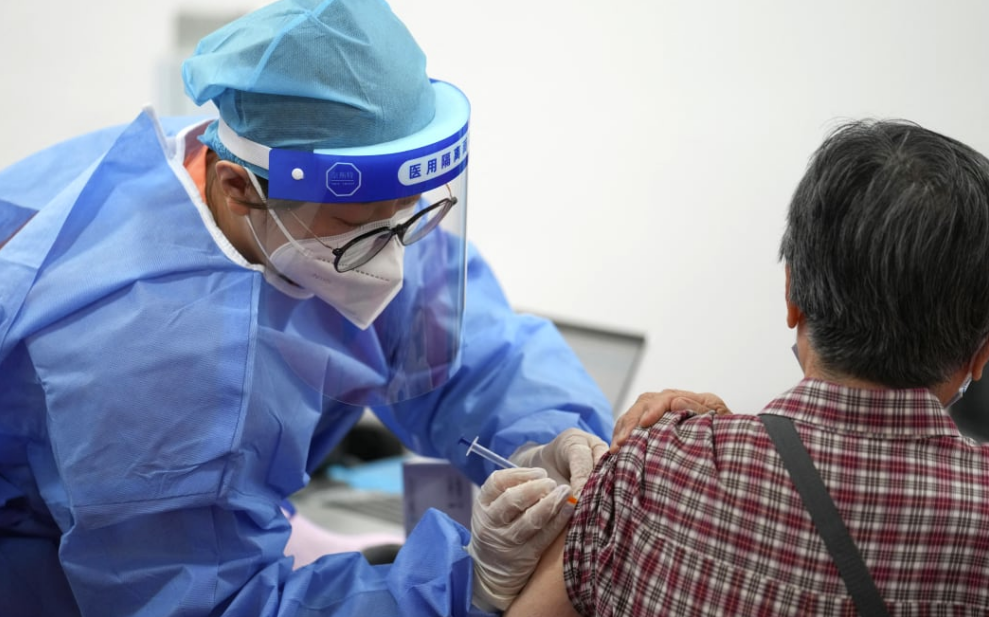BEIJING, Dec. 30 (Xinhua) -- If you only get your COVID-19 news from Western media, you might believe that China's economy is in trouble and life-saving measures are out of place.
However, China's COVID-19 reality differs from what they report. Life and business are picking up across the country as a result of the widespread adjustment in epidemic response.
China's epidemic prevention and control has entered a new stage despite the fact that some Western media characterized the change as "rapid" and "dramatic," ignoring the fact that China has changed its response strategy based on a comprehensive assessment of the mutation of the virus, the COVID situation and ongoing response efforts.
Li Bin, deputy head of the National Health Commission (NHC), has said that various factors have created the conditions necessary for the latest adjustment in the management of novel coronavirus infection.
"It in no way means letting go of the virus or a complete exit from prevention and control measures," Li said. "China will continue improving management, services and guarantees."

(File photo: Xinhua)
LOW DEATH RATES
During the fight against COVID-19, China has effectively coordinated COVID response with economic and social development, and refined the response policy in light of the evolving situation.
Over the past three years, China has effectively responded to five global COVID waves and avoided widespread infections with the original strain and the Delta variant, which are relatively more pathogenic than the other variants.
China has kept its severe COVID-19 cases and death rates among the lowest in the world. The average life expectancy of the Chinese has continued to rise amid the pandemic, from 77.93 years in 2020 to 78.2 years in 2021.
Liang Wannian, head of the COVID-19 response expert panel under the NHC, recently told media that the domestic epidemic situation "shows that some Chinese cities have passed or are passing the first wave of peak infections, but there is no presence of frightening widespread death."
Liang also voiced his disagreement about regarding the new adjustment as "laissez-faire," saying that "I have felt Chinese people are facing up the epidemic together with the government and those governmental departments, together addressing the upsurge and spread of the epidemic."
RAMPING UP VACCINATION
In China, over 90 percent of the population has been fully vaccinated. Almost 87 percent of people over the age of 60 have been fully vaccinated, while 66.4 percent of people aged over 80 have completed a full course of vaccination.
With a population of 267 million aged above 60, China is accelerating vaccination among this group. In late November, the country released a work plan to improve the vaccination rate among the elderly.
Measures, such as the "express channels" for the elderly, are adopted in different places to boost the vaccination rate.
Over the past three years, while China adapts the COVID response to the evolving circumstances, one thing has remained unchanged, which is the country's commitment to putting the people and their lives first.
ENHANCING SUPPLY OF MEDICAL SERVICES
Instead of "squandering the time" as some Western media reported, China in the past three years has developed effective COVID-19 diagnosis and treatment expertise and medicines, and kept improving its capacities in terms of medical treatment, pathogen detection and epidemiological investigation.
China's pharmaceutical companies have been stepping up the output of medicine, masks, vaccines, and other anti-COVID-19 medical supplies. The country's daily production capacity of fever and pain relievers ibuprofen and paracetamol has exceeded 200 million tablets, while the daily output reached 190 million.
China has raced against time to improve its health infrastructure.
The country has been accelerating efforts to expand the capacity of fever clinics at medical institutions. By Dec. 15, more than 15,000 fever clinics had been set up in grade II hospitals and above, while more than 35,000 fever clinics or consulting rooms were available in primary-level medical and health institutions.
To cope with rising numbers of fever patients, many Chinese cities have converted nucleic acid testing booths into temporary "fever clinics" or "consultation rooms" that can receive fever patients and prescribe basic medicines.
LIFE, BUSINESSES RECOVERING
Unlike some Western reports of "empty streets" and "disrupted life," the bustling traffic is back, and lots of restaurants have resumed dine-in services.
Currently, over 9,800 cinemas are in operation across the country, accounting for around 80 percent of the total number, according to professional box office tracker Dengta Data.
The tourism market has seen a resurgence in many places, especially some warm cities in the south. Data from Alibaba's travel branch Fliggy showed that the real-time search volume and booking volume of domestic air tickets and hotels increased substantially.
INDUSTRIAL RECOVERY
Across the country, production lines of China's vast network of factories are humming, allowing no disruption to the supply chains.
Many Chinese provinces and cities have sent trade delegations overseas to fortify ties with their partners and peers, and explore new opportunities.
To help businesses accelerate the resumption of production while ensuring a safe working environment, various areas across the country have formulated local measures.


